 List of Insurance Companies Logos and Names in Libya – World Insurance Companies Logos. Click on the insurance company logos to get a bunch of up-to-date information from every insurer in LIBYA. We are interested in helping you find the best insurance.
List of Insurance Companies Logos and Names in Libya – World Insurance Companies Logos. Click on the insurance company logos to get a bunch of up-to-date information from every insurer in LIBYA. We are interested in helping you find the best insurance.
List of Insurance Companies Logos and Names in Libya
List of Insurance Companies Logos and Names in Libya. The graphic mark of a company is synonymous with its brand. In insurance, a logo is immediately recognizable and allows the customer to associate the business with the useful qualities such as trust, the fair price and many other essential questions about the task of finding the best insurance.
- All
Health in Libya
A Ministry of Health report stated that Libya has 96 hospitals, 25 specialized units, 1355 basic health centers, 37 polyclinics and 17 quarantine units and in February 2009 there were 10230 doctors (17/10 000 population), 84% of them were nationals.
Although the Libyan authorities have largely invested in health services in the three decades up to 2011, which reflected positively in the population’s health indicators, some significant challenges remained, most notably:
The scarcity of national health information led to inaccurate health indicators regarding the causes of mortality and morbidity.
The high incidence of HIV/AIDS among intravenous drug users in the world.
A shift in the burden of disease over the past 20 years towards noncommunicable diseases (NCDs). Other major setbacks in the country’s health system included:
A big proportion of the health workers were foreigners, especially in the southern part of the country.
Poorly functioning primary health care (PCH) network, particularly in the main cities (Benghazi and Tripoli).
Many Libyan were sent for treatment abroad, which consumed a substantial proportion of the country’s health expenditures.
Since the beginning of the 2011 conflict, the Libyan health system has been adversely affected. Many factors impose serious challenges to the public health sector, such as the insufficiency of health information system, severe medical supply shortage, and loss of the health staff.
Health services are becoming progressively unavailable. For example, Al Zahra Kidney Hospital near Tripoli was severely damaged and looted during April 2015 clashes. Many hospitals in Benghazi were forced to close because of security concerns. In the meanwhile Benghazi Medical Center (BMC) became the primary hospital for the provision of health care in the city of Benghazi. The country is facing severe shortage of medications, medical supplies, and vaccinations which is basically caused by the lack of security and the interrupted supplies delivery.
Among the shortage list are chronic disease medications like insulin, anti-tuberculosis, anti-neoplastic, and HIV/AIDS medications as well as laboratory reagents, obstetric and renal dialysis supplies and intravenous fluids. Surgical theaters are suffering from the insufficiency of anesthetics, dressing materials, and internal fixators for fractures.

List of Insurance Companies Logos and Names In Liberia
List of Insurance Companies Logos and Names In Liberia. Monitor the best insurers, based on costs, coverage, customer service and claim assistance. Find out which insurance company you trust.
- All
View the logos and names of major insurance companies in Eritrea on the Eritrea, Africa page.
Economy in Liberia
This country is one of the poorest countries in the world, and its economy is extremely underdeveloped, largely due to the First Civil War in 1989-96.
The civil war destroyed much of the economy, especially the infrastructure in and around Monrovia.
The war also caused a brain drain and the loss of capital, as the civil war involved overthrowing the Americo-Liberian minority that ruled the country.
Some returned during 1997, but many have not. Richly endowed with water, mineral resources, forests, and a climate favorable to agriculture, but poor in human capital, infrastructure, and stability, this region has a fairly typical profile for Sub-Saharan African economies – the majority of the population is reliant on subsistence agriculture, while exports are dominated by raw commodities such as rubber and iron ore. Local manufacturing, such as it exists, is mainly foreign-owned.
The democratically elected government, installed in August 1997, inherited massive international debts and currently relies on revenues from its maritime registry to provide the bulk of its foreign exchange earnings. The restoration of the infrastructure and the raising of incomes in this ravaged economy depend on the implementation of sound macro- and micro-economic policies of the new government, including the encouragement of foreign investment.
Shipping flag of convenience
Liberia maintains an open maritime registry, meaning that owners of ships can register their vessels as Liberian with relatively few restrictions.
This has meant that ship registration is usually understood as the employment of a flag of convenience. The country has the second-largest maritime registry in the world behind Panama, with 3,500 vessels registered, under its flag accounting for 11% of ships worldwide. This includes 35% of the world’s tanker fleet. The nation earned more than $18 million from its maritime program in 2000.
Foreign aid
This Nation has relied heavily on vast amounts of foreign assistance, particularly from the United States, Japan, Britain, France, Italy, Germany, the People’s Republic of China, and Romania. But because of the Liberian Government’s perceived disregard for human rights, foreign assistance has declined drastically.
The Republic of China (Taiwan) and Libya are currently the largest donors of direct financial aid to the Liberian Government. Significant amounts of aid continue to come in from Western countries through international aid agencies and non-governmental organizations, avoiding direct aid to the government.
Communications
Communications refers to the press, radio, television, fixed and mobile telephones, and the Internet. There are six major newspapers in Liberia, and 45% of the population has a mobile phone service.
The number of registered newspapers and radio stations (many of them community stations) is on the rise despite the limited market potential. And politically critical content and investigative pieces do get published or broadcast.
Insurance in Liberia, Africa – World Insurance Companies Logos
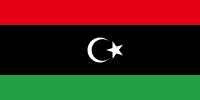


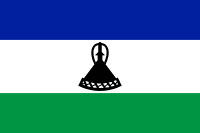
 List of Insurance Companies Logos and Names in Lesotho – World Insurance Companies Logos. Click on insurers logos for a wealth of up-to-date information available to every insurer. We are interested in helping you find the best coverage.
List of Insurance Companies Logos and Names in Lesotho – World Insurance Companies Logos. Click on insurers logos for a wealth of up-to-date information available to every insurer. We are interested in helping you find the best coverage. 

 List of logos and names of insurance companies in Kenya – World Insurance Companies Logos. Click on the insurance company logos to get a bunch of updated information offering to every insurer. We would like to help you find the best assurance.
List of logos and names of insurance companies in Kenya – World Insurance Companies Logos. Click on the insurance company logos to get a bunch of updated information offering to every insurer. We would like to help you find the best assurance. 
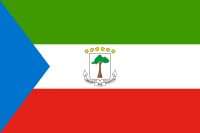
 List of Insurance Companies Logos and Names in Equatorial Guinea – World Insurance Companies Logos. Click on the Insurance Company logos to get a wealth of up-to-date information for every insurer. We would like to help you find the best.
List of Insurance Companies Logos and Names in Equatorial Guinea – World Insurance Companies Logos. Click on the Insurance Company logos to get a wealth of up-to-date information for every insurer. We would like to help you find the best. 
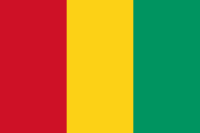
 List of Insurance Companies Logos and Names In Guinea – World Insurance Companies Logos. Click on the Insurers logos to get a bunch of updated information offering to every insurer. Take a look at the essential points about health care in Guinea
List of Insurance Companies Logos and Names In Guinea – World Insurance Companies Logos. Click on the Insurers logos to get a bunch of updated information offering to every insurer. Take a look at the essential points about health care in Guinea

 List of Insurance Companies Logos and Names in Ghana – World Insurance Companies Logos. Click on the insurers logos to get a bunch of updated information for every insurer. Take a look at the essential points about healthcare in Ghana.
List of Insurance Companies Logos and Names in Ghana – World Insurance Companies Logos. Click on the insurers logos to get a bunch of updated information for every insurer. Take a look at the essential points about healthcare in Ghana.

 List of Insurance Companies Logos and Names in the Gambia – World Insurance Companies Logos. Click on the insurance company logos for a wealth of up-to-date information for every insurer. Take a look at the essential points about healthcare in the Gambia.
List of Insurance Companies Logos and Names in the Gambia – World Insurance Companies Logos. Click on the insurance company logos for a wealth of up-to-date information for every insurer. Take a look at the essential points about healthcare in the Gambia.
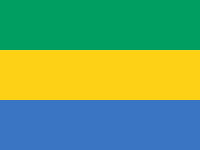
 List of Insurance Companies Logos and Names in Gabon – World Insurance Companies Logos. Click on the insurance company logos for a bunch of up-to-date information available to each insurer. Take a look at the essential points about healthcare in Gabon.
List of Insurance Companies Logos and Names in Gabon – World Insurance Companies Logos. Click on the insurance company logos for a bunch of up-to-date information available to each insurer. Take a look at the essential points about healthcare in Gabon.
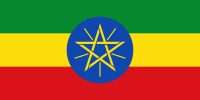
 List of Insurance Companies Logos and Names in Ethiopia – World Insurance Companies Logos. Click on the logos with the names of the insurance companies to get a lot of up-to-date information. Take a look at the essential points about healthcare in Ethiopia.
List of Insurance Companies Logos and Names in Ethiopia – World Insurance Companies Logos. Click on the logos with the names of the insurance companies to get a lot of up-to-date information. Take a look at the essential points about healthcare in Ethiopia.